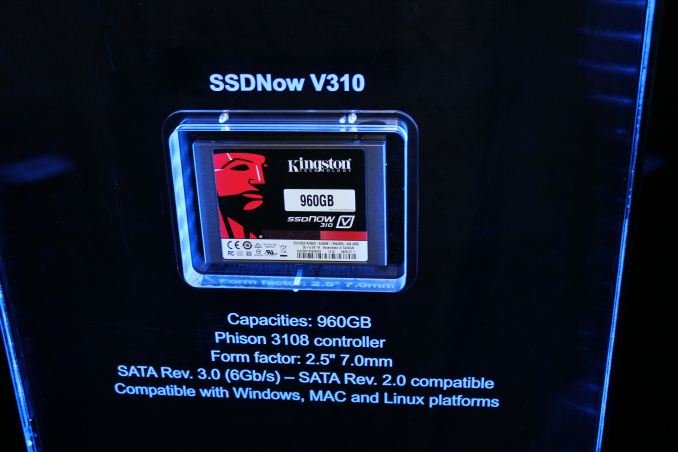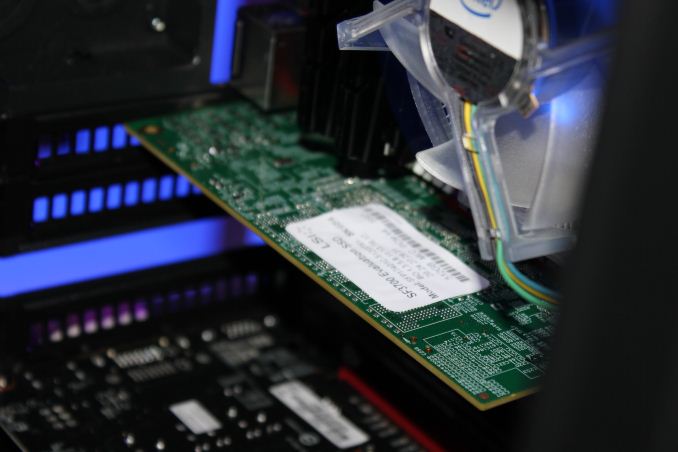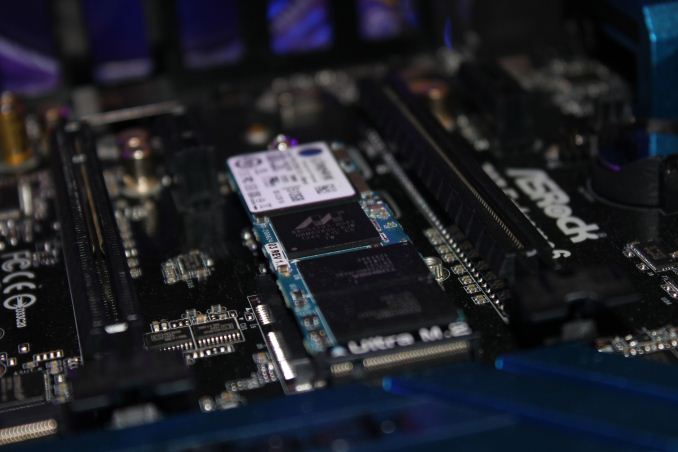Computex 2014: Kingston Announces V310 & HyperX Fury SSDs, Shows SF3700 And Marvell PCIe SSDs
by Kristian Vättö on June 8, 2014 10:11 AM ESTUnlike many manufacturers, Kingston didn’t have a booth or suite at Computex but instead they held a one-day HyperX gaming event on the top floor of one of Taipei’s many skyscrapers. In addition to the gaming event, Kingston had several upcoming products to show, ranging from Phison based V310 SSDs to PCIe 2.0 x4 SSD with a brand new Marvell controller.
The V310 will be the successor to V300 and is based on Phison S8 controller instead of the SF-2281 found in the V300. The NAND will be Micron’s 128Gbit 20nm MLC, which enables Kingston to go all the way to up to 960GB. Pricing should be quite similar to the V300 but the difference is that the V310 provides the same performance regardless of the data type (incompressible vs compressible). I was told that the official release should take place in about six weeks, so it looks like July will be a busy timeframe for new SSDs.
Kingston is also bringing a new model to their HyperX family: the HyperX Fury. This is yet another SF-2281 drive and similar to the V310 it utilizes Micron’s 128Gbit 20nm MLC NAND. This provides lower cost compared to the HyperX 3K and Kingston is aiming the Fury at the lower-end gaming segment. Capacities are limited to just 120GB and 240GB and the drives should be available soon.
Now, the PCIe stuff. Kingston had two PCIe SSDs to show —one being the SF3700 based HyperX Predator that was already showcased at CES earlier this year and the other being a Marvell based PCIe 2.0 x4 drive. Similar to everyone else, Kingston couldn't really tell us anything new about the SF3700 but Kingston is still aiming for Q4 release. Kingston had the same 80/20 read/write demo to show that LSI showed us earlier but Kingston was able to tell me that the writes are not 100% compressible. Performance was the same 1.3GB/s that we saw earlier, so nothing new in the SF3700 front really.
As for the Marvell based drive, this is the first time Kingston is working with Marvell and they actually had to hire a few engineers since the Marvell platform is different from the others. The firmware development is still in the early stages but Kingston had a live demo running that showed sequential read performance of nearly 1.4GB/s. Release timeframe is still up in the air due to firmware development but we will probably see the drive some time next year.
Kingston also had some DDR4 at their event but the details were very limited. They will have a full lineup ready when the X99 launches but at this point, they were not willing to discuss any details regarding speeds. The module they had at the show was a 2133MHz one (for servers I think) but we will likely see higher speeds for the desktop market. Desktop capacities will be limited to 8GB at launch while server DIMMs will be available in 16GB as well.















35 Comments
View All Comments
hojnikb - Sunday, June 8, 2014 - link
3108 is S8, not S9.Both drives are meh. First, fury is using the old sandforce, which is a joke nowdays and they yet again downgraded their V line. First, they used much slower async micron flash (and not even renaming, which is a really bad practice) now they are using phison controller, which could end up even slower than sandforce.
Yeah, unless this is significally cheaper than MX100, this won't make much sense.
Kristian Vättö - Sunday, June 8, 2014 - link
Thanks for the heads up, fixed it. For some reason I had S9 in my head but of course it is S8 and not S9.hojnikb - Sunday, June 8, 2014 - link
Yeah, S9 also isn't a good fit for such drive anyway, because its limited (according to phison anyway) to just 256GB, while V310 is suppost to have 960GB aswell :)Although i do wonder, when (if ever) are S10 (PS3110) drives gonna start showing up :)
Flunk - Sunday, June 8, 2014 - link
It all depends on how cheap the Hyper X Fury is, it's still a heck of a lot faster than a hard drive and the SF-2281 performs better with cheap NAND than most controllers because of the compression. If it comes out at < $0.50 / GB it could be good for price-conscious builds. Otherwise I'm going to keep recommending the Samsung 840 EVO.BedfordTim - Sunday, June 8, 2014 - link
I am curious why you recommend the EVO. In the UK at least the MX100 if 25% cheaper, has power loss protection and is fast enough.hojnikb - Sunday, June 8, 2014 - link
maybe because it has samsung badge on it :)Or just old fame, as it was once price king. But not any more.
dylan522p - Sunday, June 8, 2014 - link
Then you are recommending a inferior drive. MX100 has higher quality NAND. More features and it's a lot cheaper while delivering the same performance.hojnikb - Sunday, June 8, 2014 - link
Yeah, mx100, despite not being the fastest thing around, is simply steal at those prices. Too bad they dont offer 1TB version though.Flunk - Sunday, June 8, 2014 - link
That Phison controller is not one anyone should be buying, there is a better option at every price point those drives hit.name99 - Sunday, June 8, 2014 - link
"Desktop capacities will be limited to 8GB [for DDR4]"This seems like it's going to be a real problem.
As I understand it, non-Xeon Broadwell's ship with dual memory channels. Given the point-to-point topology of DDR4, this means those machines can only support 2x8=16GB. That's fine for portable machines which are for the most part already built that way (only two slots, or no slots, only two soldered DIMMs) but 4 slots for desktop machines is very common, and I imagine quite a few people utilize that. I, for example, have my IB iMac pimped out with 24GB of RAM.
I'm not sure how this will play out. (I have a feeling how it plays out long term, but not what happens over the next year or so as Broadwell ships).
One possibility is that Intel gets enough pushback that they ship desktop i7's with 4 channels.
Another is that Kingston simply finds itself unable to sell to the desktop market because that market (at least the high-end part) will only be interested in 16GB DIMMs.
[Long term, I think the way this plays out is that the memory system becomes even more complex, with NUMA RAM becoming standard. DDR5 say will be soldered physically close to the CPU, to avoid even the capacitance of the DDR4 slots, but there will be slots available for something like DDR3 for capacity expansion. The question, then, is who controls this config.
If Intel had ANY sense, they'd be working on this now, and they'd want the intelligence to manage moving data between the fast DD5 and the slow DDR3 to live in their memory controller.
But Intel seem to be lacking a lot of common sense recently, so they may cede this to the OS which will manually move the data using the paging system --- which will work, but probably not be quirw as fast.]